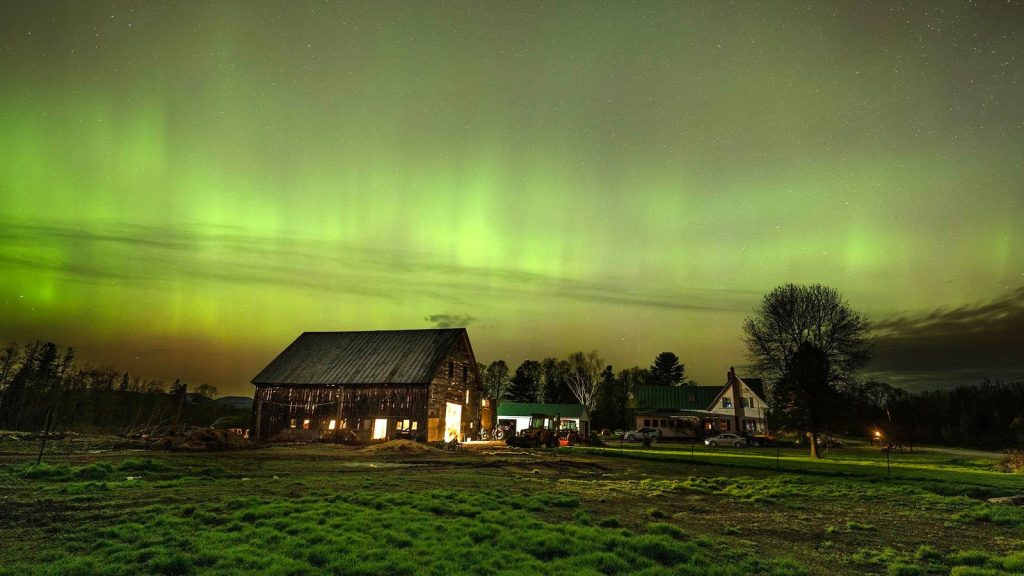The Northern Lights—also known as the aurora borealis—may become visible in the early hours of Wednesday in northern U.S. states as the after-effects of a “halo CME” arrive at Earth.
The fabulous natural phenomenon results from the solar wind, charged particles from the sun accelerating down the magnetic field lines at the north and south poles into Earth’s atmosphere.
‘Halo CME’
Experts modeling the solar wind sounded the alarm Monday after multiple separate coronal mass ejections left the sun on July 21, all aimed toward Earth, creating a rare “halo CME.” A CME is a cloud of magnetic fields and charged particles from the sun that stream into space at up to 1,900 miles (3,000 kilometers) per second. They can take a few days to reach Earth (if they’re Earth-directed).
Exact Timings
According to an alert issued on Monday, July 22, by the NOAA Space Weather Prediction Center, displays of Northern Lights could be seen over some northern and upper Midwest U.S. states from New York to Idaho between 06:00-09:00 Universal Time on July 24—that’s 01:00-04:00 EDT.
The “halo CME” is expected to trigger a G2-class geomagnetic storm at that time. This refers to the severity of the storm, which also affects how far south it can be seen.
Generally speaking, G2 storms can be seen as far south as New York and Idaho; for G3, it’s Illinois and Oregon; and for G4, it’s Alabama and northern California.
Wednesday’s display is therefore not expected to be as strong—or reach as far south as—May 10’s extreme G5 geomagnetic storm, which caused displays of aurora across the world. Expect “photographic aurora,” which only a smartphone or manual camera can capture to show significant color.
Thirty Minute Forecast
U.S. states that may get a glimpse of aurora may include Wisconsin, North Dakota, South Dakota, Michigan, Montana, Minnesota, the northernmost part of New York and Maine.
It’s wise to have a Dark Sky Place or somewhere away from light pollution in mind, but since forecasts can change quickly, check the latest advice from the NOAA Space Weather Prediction Center for exact timings—particularly its 30-minute forecast page. Frequent checking of apps like My Aurora Forecast & Alerts, AuroraWatchUK or the online Aurora – 30 Minute Forecast – Space Weather Prediction Center is also recommended.
Before you head out, check the weather forecast because clear skies are required to have any chance of seeing aurora.
Predicting Aurora
Last week, researchers at Aberystwyth University presented new research suggesting that it’s now possible to predict the precise speed at which a CME travels and, therefore, accurately predict when a geomagnetic storm will begin.
That’s important because very strong geomagnetic storms can mean strong currents that can potentially damage power transmission lines, oil and gas pipelines, railways and submarine cables.
Pick up my books Stargazing in 2024, A Stargazing Program For Beginners, and When Is The Next Eclipse?
Wishing you clear skies and wide eyes.
Read the full article here









